Land Hermit Crabs and Their Care
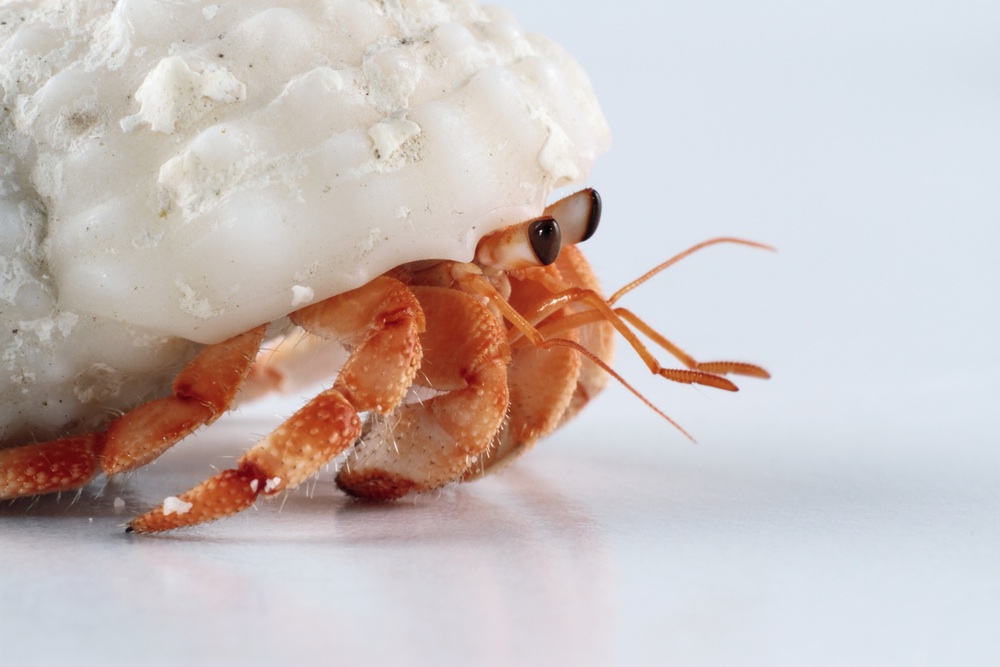
If you’re looking for a household pet that’s relatively inexpensive, doesn’t take up much space, is easy to look after and won’t upset the neighbours, then land hermit crabs could prove the answer. One of the other great things about land hermit crabs is that they are genuinely suitable as children’s pets. They’re not like geckos for example which are likely to run off if the top to their vivarium is accidentally left open, although take care about arranging the decor, as these crustaceans can climb well.
Also, if you have two or three children, then they have each have their own, instantly identifiable crab without the expense of having to purchase a number of different set-ups. There is also a wide range of equipment they can buy for their pets too, at pocket-money prices. Even so, land hermit crabs actually make interesting pets for people of all ages, especially if your time is limited. You can set up a very attractive environment for them, shaping the decor to your individual taste.
Creating your own hermit crab haven
Since the quarters of these crabs does not require a great deal of cleaning out, so it is quite feasible to use a glass tank, in the guise of an empty aquarium, which should have a capacity of at least 45l (10gal). It needs to have a snug-fitting roof, not just to prevent the occupants from escaping, but also to maintain the relative humidity within the enclosure. Special land hermit crab set-ups are also available, which are typically made out of acrylic, or alternatively, you can use one of the larger sizes in the Exo-Terra® Faunarium range or similar. These may dry out more quickly however, because the roof has more ventilation holes.
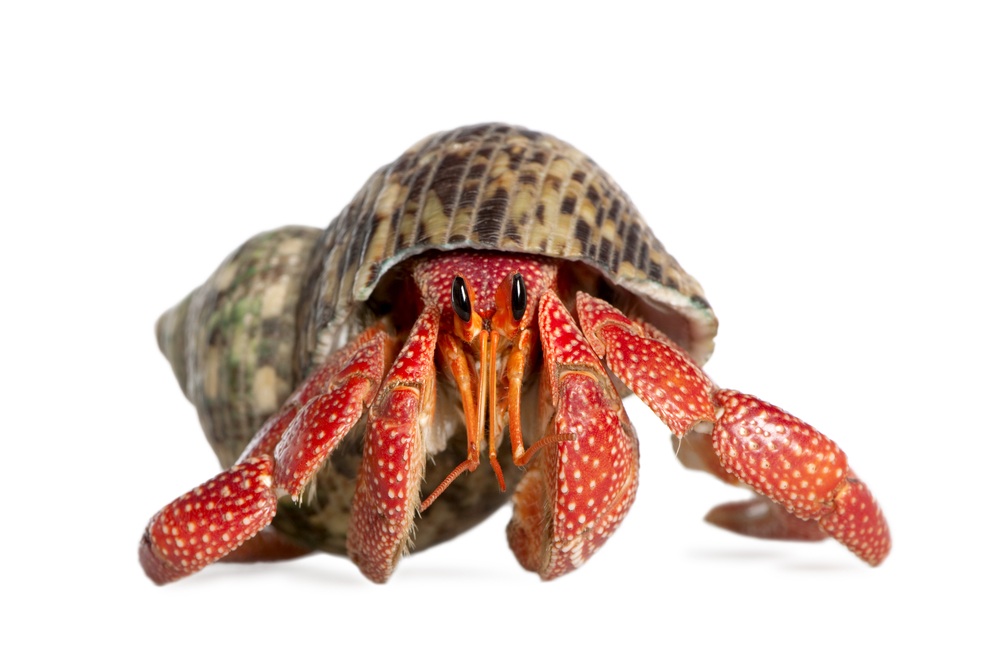
The substrate can consist of special vivarium sand. This creates a natural floor covering which is also easy to spot-clean with a teaspoon kept for this purpose. There are other alternatives however, notably fine gravel marketed specifically as a floor covering for their quarters, or coconut fibre sold for use with reptiles.Land hermit crab
This latter material has a very fine consistency, but will compact quite rapidly, unlike sand. This means that the crabs can burrow into it, with less risk of their tunnels collapsing on top of them. It retains water well, and so is especially useful when they are moulting, as the relative humidity is corresponding high.
Land hermit crabs need to be kept at a temperature between 22-27°C (72-80°F). This can be achieved with a heat pad under thermostatic control. It may be necessary to attach the heat source to the back of the enclosure though, rather than below. The substrate needs to be deep enough to allow the crabs to bury themselves here, and it can therefore act as an insulating barrier to this warmth.
Low wattage lighting can be recommended, but beware of using incandescent bulbs, as these are likely to overheat the crabs’ quarters, and reduce the humidity to what may be a dangerous level.
The importance of humidity
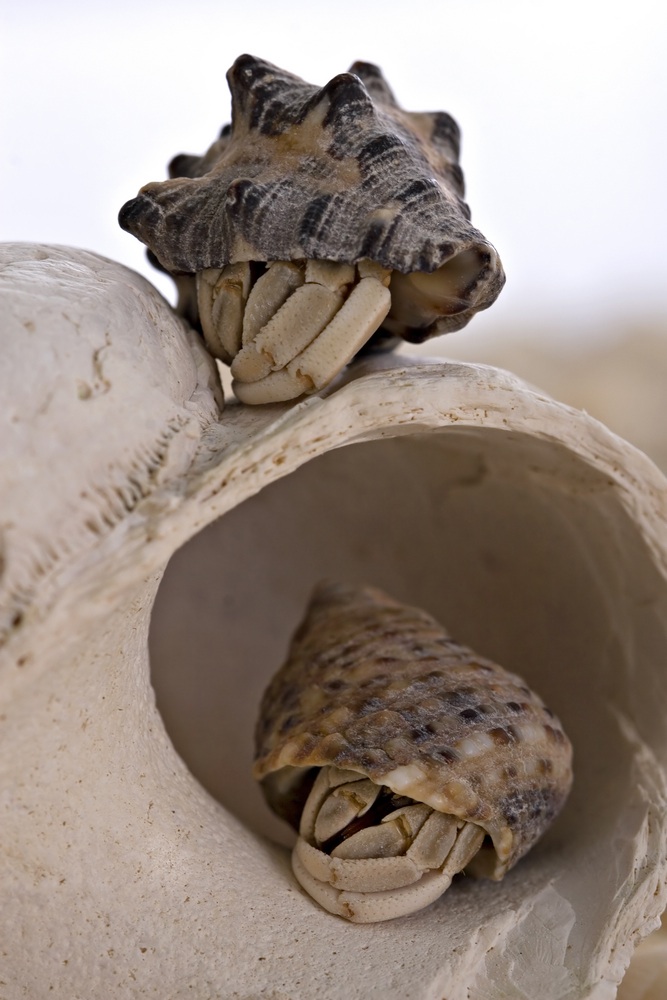
This is the most crucial part of maintaining these crustaceans successfully. You can monitor the temperature and relative humidity in the enclosure by means of a combined thermometer-hygrometer unit. The relative humidity figure in their quarters must be between 70 and 80% if the crabs’ welfare is not to suffer. Although they live on land, they actually breathe through gills rather than lungs. These must be kept moist in order to prevent the crabs from suffocating.
A suitable container to allow the crabs to submerge themselves in water can be set on or partially buried in the substrate. Never use metal drinkers, as they are likely to be toxic. Crabs need to be able to immerse their bodies fully but if you’re worried about the depth of the water, you can always add a piece of sponge, to help to ensure that a small crab will not drown here. Sponges are also useful to raise the relative humidity in the enclosure itself, as they can hold a considerable volume of water, but bacteria can also multiply quite rapidly on them.
Being able to climb well means that the rim of the drinker will not be a major barrier to these crustaceans. It is not usually obvious whether your crabs need salt or freshwater however, and so a container of each should be supplied for this reason. Always use a special water conditioner for treating tap water, as otherwise, chlorine-based compounds, widely-used for water purification purposes, can cause blistering of their gills and this will be fatal for the crabs.
A small quantity of salt (as sold for a marine aquarium) should be mixed with tap water to create a supply of what is effectively a sea water substitute, with table salt not being suitable for this purpose. Water dishes should be washed out every day, but do not use washing-up liquids and similar products, as residues could prove harmful.
Feeding and fighting
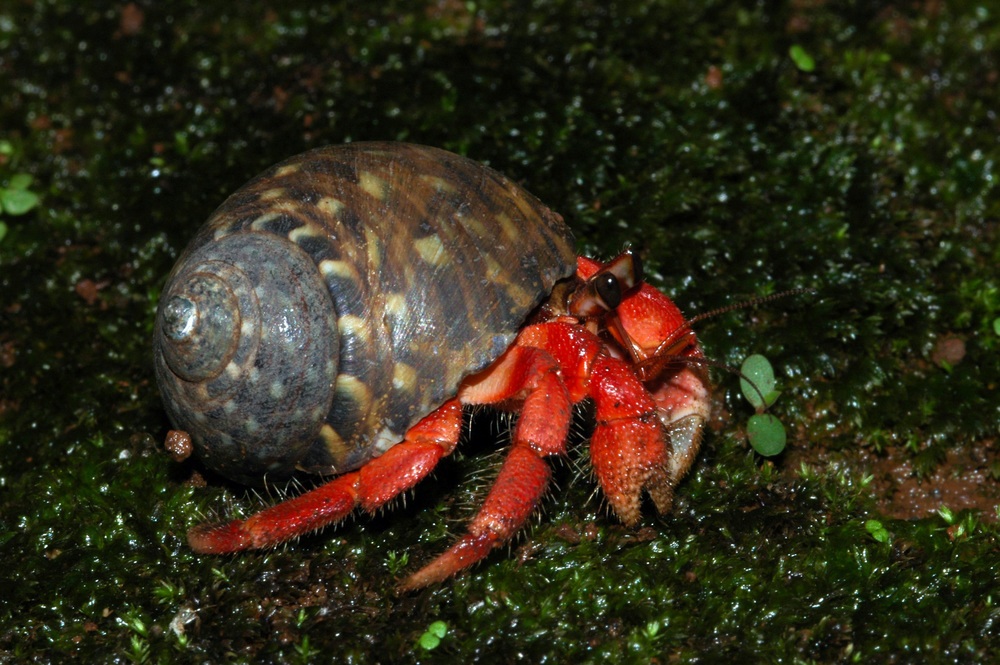
Food too should be supplied in a container, although the chances are that some of this will be dragged out by the crabs across the substrate. Land hermit crabs are scavengers so feeding is very straightforward, but there are special formulated foods available for them, which are recommended. They only eat relatively small quantities. Their diet can also be supplemented by providing special calcium blocks.
Although these crabs do not vocalise as such, they are able to make a grating sound. This noise is thought to be the result of movements of their bodies inside the shell and is most likely to be heard when one individual is challenging another. Land hermit crabs are actually social creatures by nature and should be kept in small groups, rather than on their own. They will often rest in the same area, as shown above.
Occasional pushing and shoving between individuals is quite usual, but watch for occasional cases when one crab grabs on to the open part of the shell of another. This is commonly a sign that it wants to eject the existing occupant and they will need to be separated at this point. It is often possible to divide an enclosure if necessary, using a piece of driftwood for example, to create the impression of a groyne.
Decoration
The agility of these crabs is remarkable, and they should be provided with climbing and burrowing opportunities. Buy a range of shells for your hermit crabs, and decorate the floor of their quarters them. Then when the crab squeezes out of its old shell and searches for a new, larger shell, it will have a good choice available, and this reduces the risk of fighting. You can use items such as clean clay flowerpots, partially buried in the substrate to provide retreats.
Buying and handling hermit crabs
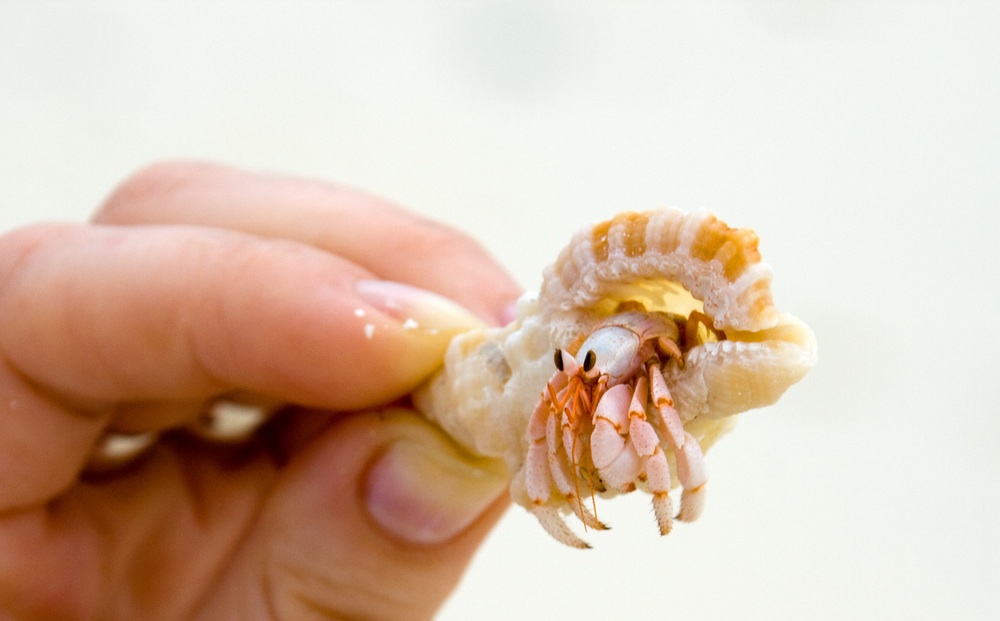
Land hermit crabs form the genus Coenobita, and it is usually the Caribbean species (C. clypeatus) that is most commonly-kept, although all species have similar care needs. Check that individuals have three pairs of legs present, and that they appear lively. If you are buying more than one, choose individuals of similar size, as this will reduce the risk of fighting. Always seek to pick them up by their shells, although beware that they may try to pinch your fingers. There is generally no need to handle land hermit crabs though - they are really pet to observe rather than interact with directly.
Illness
Relatively little is known about their illnesses, but dehydration is undoubtedly the most serious threat to their health. If a crab appears rather dull and listless, then placing it in a shallow bath of water may revive it. They can succumb to various infections too, so their quarters must be kept clean, with any perishable food being removed before it turns mouldy. In suitable surroundings, it is not uncommon for these crabs to live for 10 years or more.